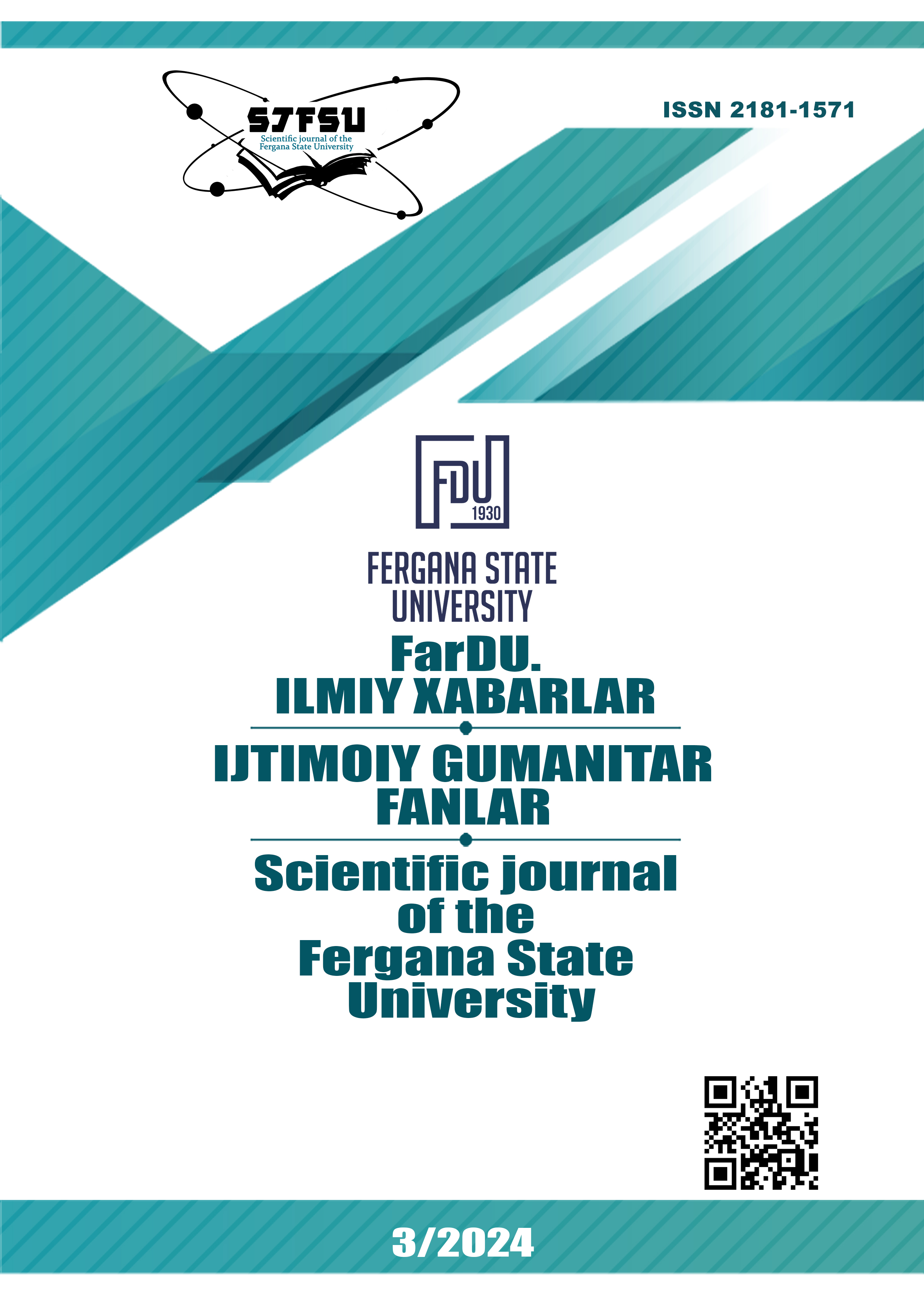RESEARCH OF ETHNOPONYMS
Keywords:
legend, method of affixation, clan name, ethnonym, ethnic group, ethnotoponyms, etymology, totem, bagish.Abstract
The article discusses the historical and etymological analysis of the ethnotoponyms Bagish, Karabagish, Chongbagish, Sarbagish, Kokbagish, Chbagish, Arbagish based on the connecting component. As a result of our research and observations based on sources given in the scientific literature, the features of ethnotoponyms in terms of naming were analyzed in order to study the names of clans and tribes embedded in the ethnic composition of the Uzbek people, as well as toponyms. which were formed on the basis of these names in individual regions. At the same time, they relied on scientific observations and methods devoted to issues of toponymy, onomastics, linguogeography, areal linguistics, nomenology in Turkology and Uzbek linguistics.
In the course of research, it was proven that the toponym Bagish was used as a family name and the toponym as a totem. At the end of the article, it can be concluded that the lexeme Bagish has moved into the name of the clan and has taken its place as a “totem” expressing the meaning of deer or deer, Chongbagish means most of the Bagish clan, sari(q) bagish means to know or rich wealth belonging to the Bagish clan , Karabagish and Kokbagish, it was concluded that the ethnonyms in their meaning expressed the location of the clans.
References
Abdullayev U. O‘zbek-qirg‘iz etnomadaniy aloqalari // Jamiyat va boshqaruv.- 2004.- № 2
Abdurahmonov G‘., Rustamov A. Qadimgi turkiy til.- T., 1982
Abulg‘ozi Bahodirxon. Shajarai tarokima. – T., 1995.
Абрамзон С.М. Труды Киргизиской археолого-этнографической экспедиции // Известия АН СССР. IV том.- М., 1960,
Аристов Н.А. Заметки об этническом составе тюркских племен народностей и сведения об их численности // Живая страна. Вып.III-IV.- СПБ.,1896.
Valixonov Ch.Ch. Qirg‘izlar haqida. Qirg‘izlar. – Bishkek, 1999.
Doniyorov X. O‘zbek xalqining shajara va shevalari. –T., 1968.
Do‘simov Z. Shimoliy Xorazm toponimlari: filol. fanlari nomzodi... dis. – T., 1970.
Do‘simov Z., Egamov H. Joy nomlarining qisqacha izohli lug‘ati. –T.: O‘qituvchi, 1977.
Karayev O‘. Kirgiz elining tuzilishi // Materialы mejdunarodnoy konferensii posvyaщyennoy 1000 letiyu eposa “Manas”.- Bishkek,1996 .
Mo‘ldaboyev I. Qirg‘izlarning etnik madaniyatining paydo bo‘lishi. // Qirg‘izlar.- Bishkek, 1999.
Наливкин В.П. Краткая история кокандского ханства. – Казан, 1886.
Nafasov T. O‘zbek urug‘ va qabilalarining nomlanishida tamg‘aning roli. // O‘zbek tili va adabiyoti.- 2006.- № 2
Никонов В.А. Топонимика в историю- географической этнограффи. – М., 1964.
Nurmonov A. O‘zbek tilining fonologiyasi va morfonologiyasi. – T.: O‘qituvchi,1990.
Otajonova A. Xorazm etnotoponimlari. – T., 1997.
Otakkurov. S. Kirgiz sanjirasi.- Bishkek,1992.
Russko-Uzbekskiy slovar. – T.: O‘qituvchi, 1972.
Серебренников Б.А., Гаджиева Н.З. Сравнително-историческая грамматика тюркских язиков.- М.: Наука, 1986 .
Словар иностранных слов. - М.,1964.
To‘ychiboyev B., Hasanov B. O‘zbek dialektologiyasi. – T.,2004.
“U kim? Bu nima?”. Bolalar ensiklopediyasi. I tom.- T., 1987.
Узбекско-Русский словар. – Т., 1988.
Chingiz Aytmatov. Oq kema. – T.: Sharq, 2003.
Shoniyozov K. Qang‘ davlati va qang‘liklar. –T.: Fan, 1990.
Hojiyev A. O‘zbek tili so‘z yasalish tizimi. – T.: O‘qituvchi, 2007.
Qirg‘izlar.- Bishkek,1999
Downloads
Published
Issue
Section
License
Copyright (c) 2024 Scientific journal of the Fergana State University

This work is licensed under a Creative Commons Attribution-NonCommercial-NoDerivatives 4.0 International License.

